The Best Food For An Overweight Labrador
Excess weight in dogs is a prevalent problem. And knowing the best food to feed an overweight Labrador is a proven way of shedding the excess weight. The high propensity of Labradors to pack on the pounds makes them highly prone to weight problems. Although research indicates that this dog breed is genetically predisposed to obesity, pet parents can help them maintain a healthy weight.
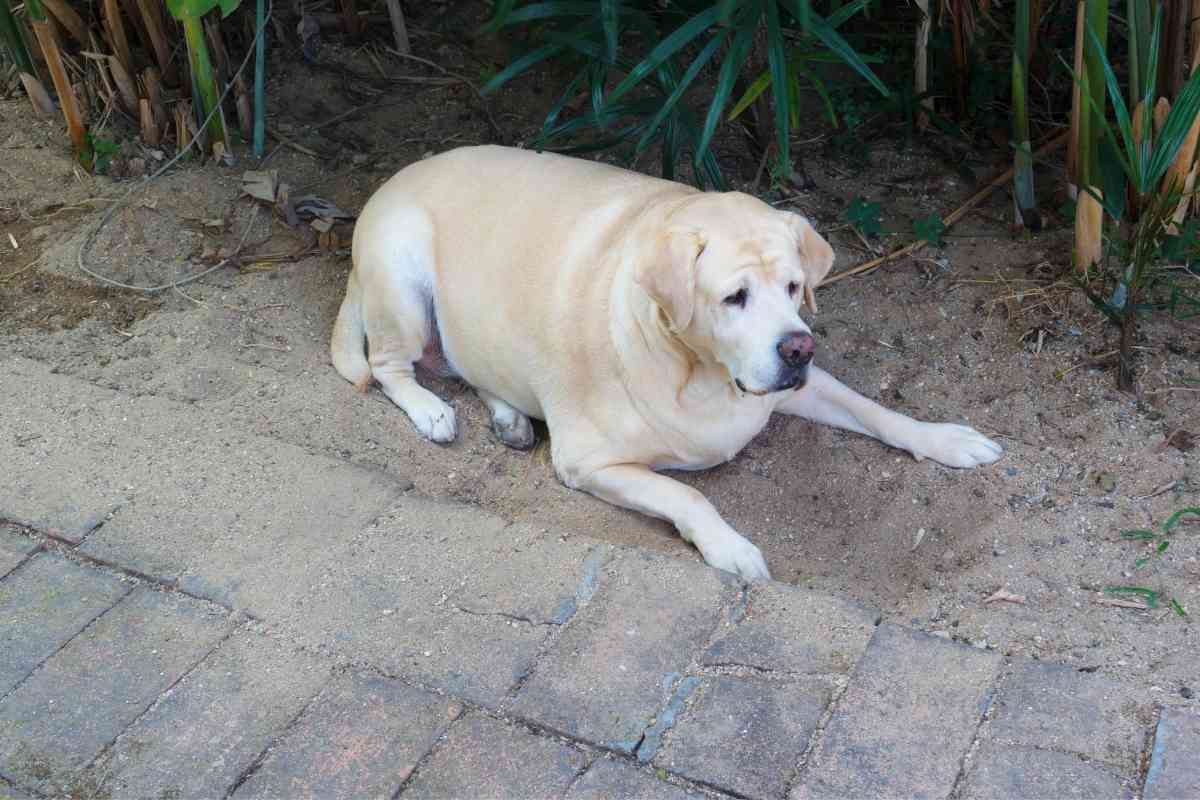
What is the best food to feed my overweight Labrador?
The best food for overweight Labradors should be high in animal protein, moderate in fat, and low in carbohydrates. It does not matter whether you give your dog kibble, raw meat, and bones (BARF), canned foods, or make meals at home, ensure the food has this ratio.
Today, we’ll look at the best overweight Labrador diet, whether raw, wet, or dry. You’ll learn how to identify whether your lab is acquiring unhealthy weight, why they’re getting fat, and how to shed these extra pounds.
Designing a realistic diet plan for an overweight Labrador is the first step toward effective weight management. Check out these expert recommendations to help you narrow down your search.
Best Food For Overweight Labrador
Because the breed has a high propensity to gain weight quickly, the best food for overweight Labradors must have the proper nutritional value. One must also be mindful of portion sizes and feeding frequency.
When left unchecked, labs will gain weight quicker than other breeds. Proper nutrition is one of the most basic needs of dogs. And because our four-legged buddies cannot care for themselves, it is up to us to decide what to feed them.
If your lab’s weight is above the optimum recommended level, it might be time to consider healthy food choices for Labradors. Generally, experts recommend you:
- Give fewer carbs and more protein.
- Feed your dog the right fats.
- Avoid high-fiber foods.
Kibble
If you prefer dry food, ensure you purchase specially-formulated weight loss kibble. The products are usually nutrient-rich, made from carefully selected ingredients such as high-protein meats, wholesome grains, and plenty of fruits and vegetables.
Always ensure the product is age-appropriate for your lab. In some cases, it might be convenient to purchase an all-breed kibble rather than a breed-specific one. And serve according to weight.
| Weight | Daily Recommended Feeding Amount |
| 100+ lb (45 kg) | 4.25—4.75 cups |
| 80 lb (36 kg) | 3.5—4 cups |
| 70 lb (31 kg) | 3.25—3.75 cups |
Numerous vets and pet parents positively review Blue Buffalo Life Protection Formula Healthy Weight.
This low-calorie kibble is 20% protein, 10% crude fiber, and 9% fat. It is made from organically sourced ingredients like chicken, brown rice, pea fiber and starch, and oatmeal.
It’s a healthy weight loss meal with the perfect balance of minerals, vitamins, and antioxidants to provide the nutrition your pup needs, minus the pounds.
Canidae PURE Healthy Weight Dog Food comes highly recommended as a grain-free alternative.
It contains lean proteins, vegetables, vitamins, minerals, probiotics, and omega fats that help your dog lose weight without compromising health.
BARF
The Bones and Raw Food (BARF) diet has inspired many controversies. Proponents claim that evolution intended canines to be fed meat and bones purely. Detractors disagree that dogs should only eat raw food.
A BARF diet is beneficial in several ways. It provides more protein, no carbs, and only natural fats. However, in raw meat, bacteria and pathogens like salmonella are a potential health hazard. There is also a risk of choking on bones.
Conduct research to learn the pros and cons of this diet plan for weight management in Labrador breeds.
Canned Foods
If you prefer to give canned food, Purina’s Pro Plan Weight Management dog food is a viable choice.
It has a moisture content of 82% plus 9% protein, 1.5% crude fiber, and 4.5% fat.
Most canned foods can be served alongside a dry diet or used exclusively as the primary food. Ensure you pay heed to portion size and caloric intake when mixing canned dog food with kibble.
Homemade Dog Food
If you have the time and are kitchen-savvy, making your lab’s meals at home is probably the best way to adhere to the diet plan. You can guarantee that the food is made with healthy and organic ingredients. It’s recommended that you consult a vet or pet nutrition specialist when coming up with your dog’s meal plan.
Whether you choose to give cooked or raw food, ensure you meet the recommended nutritional value on each plate. This typically includes about 50% animal protein, 30% complex carbs, and 20% veggies and fruits.
A pet nutritionist can recommend simple, affordable, and healthy dog recipes you can include in the diet chart. The Internet is also an excellent source of anecdotally-tried-and-proven recipes from Lab parents worldwide.
How to Tell if Your Labrador is Overweight
The ideal weight for an adult female Labrador is 55—70 lbs (25–32 kg), while that of a male is 65-80 lbs (29–36 kg). If your lab is well beyond this optimum range, we could consider them overweight.
Health experts regard a dog as overweight if they have a 25-40% body fat content. A normal-weight lab has a body fat content of 15-20%. If it goes above 40%, your dog is officially obese and at higher risk of weight-related diseases.
Use your sense of sight and touch to tell if your dog is gaining unhealthy weight. Here’s how:
Look at the dog from every angle conceivable. The waist should be visible from above, with a modest tuck behind the ribs. In addition, they should have an upward sloping line from the lower chest to the hind legs.
Run your fingers down the sides of the lab. You should be able to feel the ribs easily.
If your dog has a thick hair coat, you might find it difficult to tell whether they have put on some pounds. Should this be the case, bring out the weighing scales.
Why is My Lab Overweight?
Now that you know how to tell if your lab is overweight and have successfully established that the dog is within the said category, you might be wondering where the extra pounds came from.
Your lab could be overweight due to several reasons, including:
- Improper diet.
- Lab’s feeding habits.
- Insatiable cravings.
- Genetic issues.
- Underlying medical conditions.
- High body fat index.
- Lack of exercise.
The extra weight can severely impact a Lab’s life expectancy. Overweight and obese labs are predisposed to many health problems, including heart, kidney, and liver disease and diabetes, cancer, and hypertension.
Stick around: Let’s look at why your furry friend is getting fat in more detail.
Improper Diet
First on our list comes as no surprise. An imbalanced diet is a sure recipe for unhealthy weight in Labrador breeds. It results from either giving the wrong amount or poor quality of food.
Diets that are particularly low in proteins should be avoided. Such meals rarely satiate, and the dog will be hungry, even a few minutes after feeding. And if the food amount isn’t regulated, they will overfeed—a precursor for obesity.
You should strive to maintain your lab within the recommended weight range for their specific age. And if they happen to be overweight already, check the above recommendations for what the ideal diet should look like.
Feeding Habits
Labradors are some of the fastest eaters in the canine world. If you’ve ever observed your mutt, you’ll notice that they start eating as soon as the food touches the feeding bowl. No matter how much training you give a lab, given the opportunity, they will still gulp down their food.
Insatiable Cravings
Did you know that Labradors are highly-trainable mainly due to the treats given for positive behavior? They are motivated to listen in anticipation of a tasty reward.
Labradors are more prone to weight gain than other dog breeds because they have difficulty satisfying their food desires. About a quarter of pet Labradors are overweight due to these cravings.
You’re encouraging these cravings if you’re the type that always gives your dog morsels from the dinner table on top of the occasional additional treat. As a result, the Labrador is far more likely to pack on the pounds.
Genetic Issues
A University of Cambridge study on Lab retrievers found that this food motivation can be attributed to a genetic mutation. Lack of the POMC (pro-opiomelanocortin) gene is a significant modifier of weight and appetite in Labrador retrievers and FCRs (flat-coat retrievers).
But it isn’t all bad news for those lacking this gene? Deletion of POMC makes these dogs more trainable and, therefore, more capable of working in service roles.
Underlying Medical Conditions
Some health issues affect the feeding behavior of Labradors. Diseases like hyperadrenocorticism (Cushing’s disease) cause dogs to exhibit extreme thirst and hunger.
The condition occurs when your dog’s body makes excess amounts of cortisol. When this hormone is in abundance, canines cannot control their appetite. If feeding is unmonitored, they will eat and drink in excess, which will likely cause unhealthy weight gain.
Other conditions such as cancer, diabetes, hyperthyroidism, stress, and abnormalities in the central nervous system also lead to increased appetite. If your dog has any of these disorders and appears greedy, they are more susceptible to unhealthy weight gain.
High Body Fat Index
Evolution has designed Labradors to be good retrievers. They have a thick layer of fat underneath the skin to keep them warm during cold weather.
Compared to other animals, they have more fat mass. And if they don’t exercise, this fat mass index builds up.
If you don’t watch what you feed your lab and exercise regularly, the probability of your furry buddy becoming overweight is very high. Providing dog food with a high-fat content will further exacerbate the situation.
Lack of Exercise
Labradors are naturally very energetic dogs. But if you keep your dog indoors all day, every day, without any form of physical exercise, they will only get fat. A healthy adult Labrador requires up to one and a half hours of daily physical activity.
Weight Loss Tips for Overweight Labradors
Getting your overweight Labrador to lose weight is a step in the right direction. It serves a much bigger purpose other than just aesthetics—it is vital for their overall health and wellbeing.
Check out these excellent weight loss tips for overweight and obese Labradors.
Practice Proper Meal Planning
Nutrition is a vital component of your lab’s overall wellness. Besides the noticeable weight gain, an imbalanced diet affects your pet’s behavior and mental state. Visit a veterinary or pet nutrition specialist to help you create an effective weight loss diet plan for your overweight lab.
Reduce Your Dog’s Food Intake
You must avoid giving your pup household leftovers, fillers, and snacks in between meals. Rethink your food choices if the food you offer is high-carbohydrate or high-calorie. Unhealthy treats used as incentives during training sessions have to go too.
Adopt healthier options. Good options are frozen liver cubes, apple slices, carrots, melons, and even fish skins. But don’t forget to deduct it from their daily meal ration.
Also, find a way to foster healthy chewing behavior in your pet. Some foods might be effective in making your dog eat more slowly.
During this transition, you must be attentive and communicate with your dog. Inform them that you would be modifying the diet to enable them to lose weight. And consult the vet first before tampering with your dog’s diet if the Labrador is very young, old, or sick.
Control the Portions
Feeding your Labrador just the right amount can be a bit of a balancing act. There may be a difference between what the experts say, what the pet store attendant said, and the instructions written on the package. Who should you follow?
You must measure everything your dog eats, especially if you’re trying to make them lose weight. You should know your pet’s daily caloric needs to provide the right portions.
Adult Labradors within the optimum weight range need 1248—1656 calories daily. Inquire from the vet or use an online calorie calculator for dogs to manage the portions you offer based on your lab’s current weight.
The manufacturer will list the calorie content per cup serving if you’re giving commercial food. But if you’re giving raw or home-cooked meals, you may have to calculate depending on the ingredients used.
Once you know your Labrador’s caloric requirement, divide the figure by the number of times you feed your dog every day. For instance, if the vet advises you maintain 1100 calories daily, and you feed your Chocolate Lab twice plus a treat during training, you’ll serve as follows:
- Treat (10%)— 110 calories
- Food (90%)— 990 calories
- 990/2 = 495 calories
Also, note that with age comes change. As labs get older, their metabolism slows down significantly. They may have been gulping down 3 cups of kibble within 10 minutes but now take over half an hour with the same amount (although the dog is still in the same weight range).
There’s nothing wrong with your old furry friend. If there are no underlying medical issues, but your dog seems to need less food, slow metabolism is probably the culprit. Reducing the daily portion would be reasonable.
Account For Treats and Snacks
The snacks and treats you give your dog affect their weight more than you think. You might look at a treat as just a tiny biscuit. But if you’re rewarding your dog after every five minutes, the number of biscuits given amounts to calories eaten.
If you don’t account for the treats in their daily portion, you will be overfeeding. Do this every day, and there’s no escaping weight gain. Just follow the 90/10 rule.
But more importantly, other than quantity, check the quality of treats and snacks you’re giving your dog. We are always tempted to share what we have on our plates—plus, it doesn’t help with Fido whining, eagerly asking for a bite.
But not all foods are healthy for overweight Labradors. For instance, meaty pizza may seem like a nice snack. After all, it has extra meat toppings, so more protein, right? No! The meats are processed and have a high sodium content but offer low nutritional value for Labradors.
Exercise Regularly
A plump, lazy dog is a ticking time bomb. Even with the right diet plan, shedding off the undesirable pounds would be difficult without exercise.
Labradors are naturally energetic breeds who love to jog beside you or take long walks to the park. Keeping your pup in a state of physical inactivity is detrimental to your dog’s development. Ensure you take your pup on walks, running, swimming, or play fetch and tug for an all-rounded fun workout.
We all know how much Labs love treats. Why not use these bits of rewards to encourage the dog to exercise. No Lab I know will fail to respond to this tactic. As your lab slims down, they will become more agile and willing to exercise.
Keep Track of the Weight Loss Journey
On day one, take photos of your four-legged friend. These serve as a reference to know whether you’re progressing in the right direction. One should be from the top and another from the side. Also, record the starting weight.
After about four days, weigh your lab and note any changes. Snap a few photos again and compare them with the first batch. Is there a positive difference?
Continue this process every four or five days until your Labrador gets a healthy weight. And even then, keep monitoring to ensure your pup stays within the desired range. A fitness tracker will let you know if your dog is getting enough exercise.
Include Everyone
Get your family and friends onboard so the successful weight loss program. One of you can take the lab along during the morning run, or the kids could play fetch with the dog in the yard.
When everyone is aware of your lab’s weight loss diet, they can help achieve the weight loss goals. It could be a lost cause if you’re busy observing a strict diet and exercise regime, but your kids keep feeding Fido off their plates at any opportunity they get.
Keep It Consistent
There isn’t much difference in dieting behavior between humans and dogs. Consistency is vital to the success of the weight-loss program.
Strictly adhere to the meal plan. Don’t be tempted to let your pup lick the leftovers off your dinner plate or add an extra cup to their bowl. Maintain a constant feeding time too.
How Often Should I Feed My Overweight Lab?
Most experts advise feeding your overweight Lab 1-2 times daily, never more. It is recommended that you feed your adult dog in the morning and evening.
However, once-daily feeding is probably acceptable if you decide to feed raw meat.
How to Feed a Labrador Puppy
After the puppy is weaned off Mama Lab, you will regularly notice them scavenging countertops and dinner tables. This is just the nature of Labs.
Whether you opt for commercial foods or homemade meals, ensure you give your puppy the right amount, balance, and food quality. A chubby puppy may look cute and cuddly, but the excess weight will negatively affect its growth and development.
Current food choices for puppies are:
- Home-cooked meals
- Wet food (cans and pouches)
- Raw food (BARF)
- Kibble
Whichever one you choose to give is up to you and your little bud. Although views are largely diverse, even among experts, there isn’t enough scientific evidence to prove that one particular type of dog food is better than the rest.
The most prevalent choice in the US is kibble. Many pet parents prefer it because it is readily available and convenient. Canned food and raw meat follow closely. The important thing is that the food provides all the nutrients the puppy needs.
Most manufacturers will include a puppy feeding chart on their products that you can follow to measure the puppy’s portions based on their age and weight. You can get an educated opinion from a dog nutrition specialist or your veterinarian.
If you’re worried about the quality of raw ingredients used or allergens and additives in commercial products, inquire from your local kibble store if they can turn your homemade puppy food into kibble. You may have to pay a fee for this. You could as well learn how to make DIY puppy kibble.
Other than what you choose to feed the puppy, it would be best if you continually break the daily recommended amounts into several portions. If you give the whole day’s ration in one serving, the little one may attempt to eat it in one go leading to overfeeding, bloating, or diarrhea.
At two months, you should feed a lab puppy 2 ounces of food four times a day to maintain a healthy weight of 15—18 lbs (7—8 kg). As the puppy grows, their body changes, and so does the feeding.
When your furry friend is six months old, you should give 6—8 oz twice daily and ideally weigh between 50 and 60 lbs (23 -27 kgs).
What About Ad Libitum Puppy Feeding?
If you haven’t heard of it yet, you’re right. The ad libitum feeding system is where the puppy is left to eat freely from a hopper. The premise is that little ones can regulate how much they eat.
Ad libitum is not the best way to feed your puppy. We’ve already seen that Labradors are predisposed to gluttony, so the pup might not be able to control when and how much they eat from the automatic feeder.
Scientific evidence suggests that this kind of feeding often leads to overnutrition, which leads to increased rates of skeletal growth, abnormal bone remodeling, and heavier weight.
What is the Best Time to Feed a Lab?
Most working pet parents feed their labs once daily. If you provide adequate nutrition, your four-legged furry friend will have enough energy to see them through the night and the next day.
If you’re providing a meal twice daily, give one in the morning and the other in the evening. Have a specific feeding time so you don’t give food more or fewer times. It also enables people to help out should you be away from home.
If your lab is familiar with eating twice a day, never go more than 10 hours without feeding him. If you give breakfast at 7 am, the next dish should be between 4—5 pm.
Give the last meal of the day 2—4 hours before bedtime. This allows ample time for digestion to occur. If they eat and go to bed, they may feel like pooping in the middle of the night, disrupting your sleep.
Keep in mind that feeding is one of the ways to encourage positive behavior. Your lab will quickly learn the routine. So if one day you wake up at 5 am and fill your dog’s bowl because they are hungry, the chances of waking you up at 4:30 am the following day are pretty high.
How to Choose a Dog Food Brand
Other than the type and amount of food you feed your lab, it’s also essential you choose the best dog food brand. If you’re one to go for low prices, you might be feeding your lab low-grade meals (which beats the whole purpose of keeping a dog’s healthy weight).
There are numerous brands of dried dog food to choose from, which can make the shopping process daunting. You could find yourself staring at dozens of colorful packages with catchy names in the pet food aisle.
And the process gets more complicated if you’re shopping online. Here’s how to choose a dog food brand that is healthy, affordable, and appealing to your pet.
Type of Diet Plan
Is your lab on a commercial BARF(Biologically Appropriate Raw Food), whole food cooked, or veterinary prescription diet? The feeding plan you choose for your pup determines the type of dog food brand you will choose.
Commercial diets have the most products in the market as they’re available in dry, wet, or dehydrated forms. Nowadays, you can even buy freshly-cooked ready-to-eat meals from online sellers.
Once you create a meal plan for your lab, find a brand that offers what you need. You may need to experiment with a few categories of dog food to determine what works for your four-legged buddy.
Special Dietary Needs
Dogs with special dietary needs have different requirements. The food and portion size for overweight Labradors vary from normal-weight ones. An adult lab also had different needs compared to an adult.
AAFCO Certified
The FDA (Food and Drug Administration) requires all dog food manufacturers to print all vital information about the product on the label. It must show:
- Name of the product
- The net weight
- Manufacturer’s name and address
- Guaranteed analysis
- Ingredients listing
- Nutritional adequacy statement
- Feeding recommendations
Ensure you check the guaranteed analysis and nutrition adequacy statement especially closely. AAFCO (Association of American Feed Control Officials) has developed dog and puppy nutrition profiles. And this is how you figure out if the brand is compliant with required guidelines.
Only go for brands that meet all these regulations. Be wary if they lack any of these details. Call the manufacturer if there’s a phone number listed, and ask for clarification if you can’t get through the fine print.
Positive Reviews
The best products get the most reviews. When pet parents, breeders, trainers, and even groomers give positive reviews about a brand, it might be worth thinking about.
Go through consumer review platforms, review sites, and customer testimonials to find the best dog food. Join an online forum and inquire from fellow pet parents. Those with labs can offer invaluable advice regarding diet and weight control.
Another excellent way is to ask people around you. Begin with trained professionals like the vet and dog breeders. The local pet supply store is another trustworthy source. Pet parents to Labradors may also point you in the right direction.
But the information you obtain might be conflicting. Therefore, don’t be too quick to accept everything you hear. Instead, use this advice to inform your research.




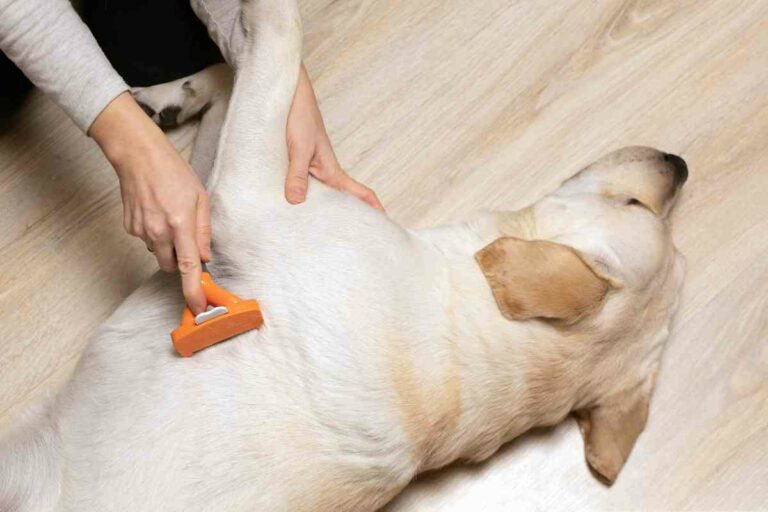
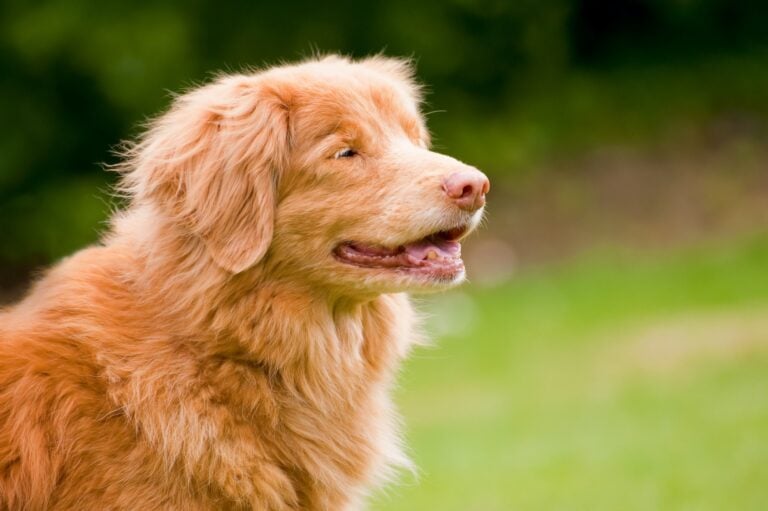

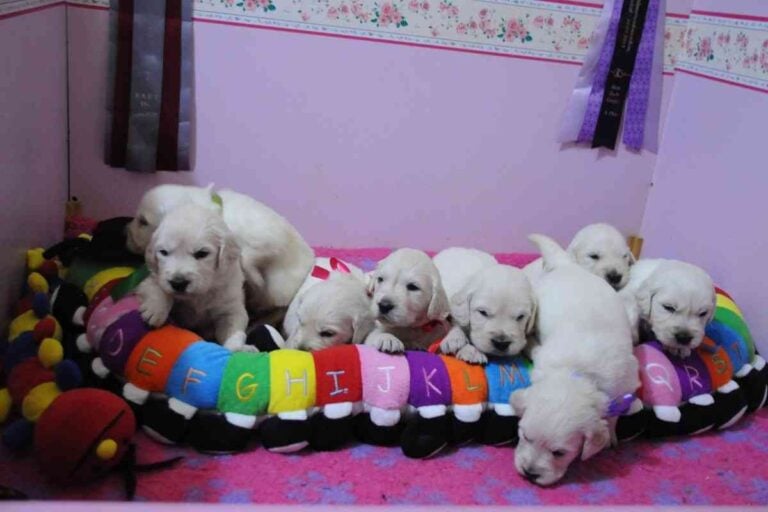
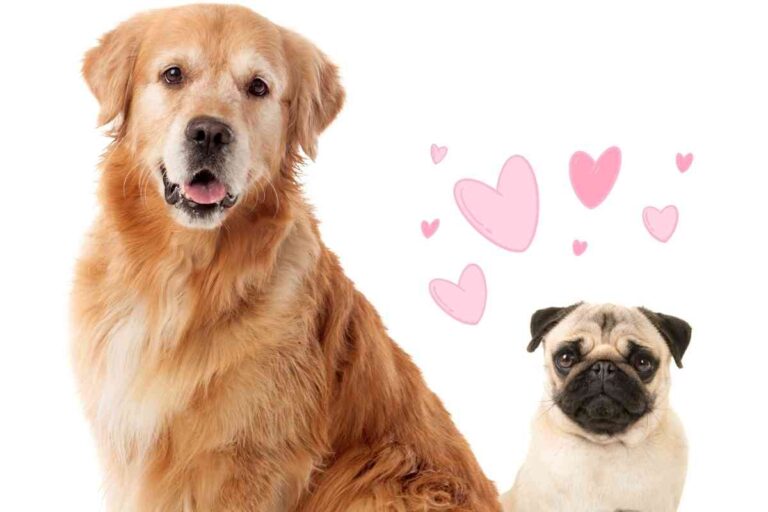
![Should Golden Retrievers Eat Large Breed Food? [Vet Explains!] 10 Should Golden Retrievers Eat Large Breed Food? [Vet Explains!]](https://retrieveradvice.com/wp-content/uploads/2022/02/Should-Golden-Retrievers-Eat-Large-Breed-Food-Vet-Explains-768x512.jpg)